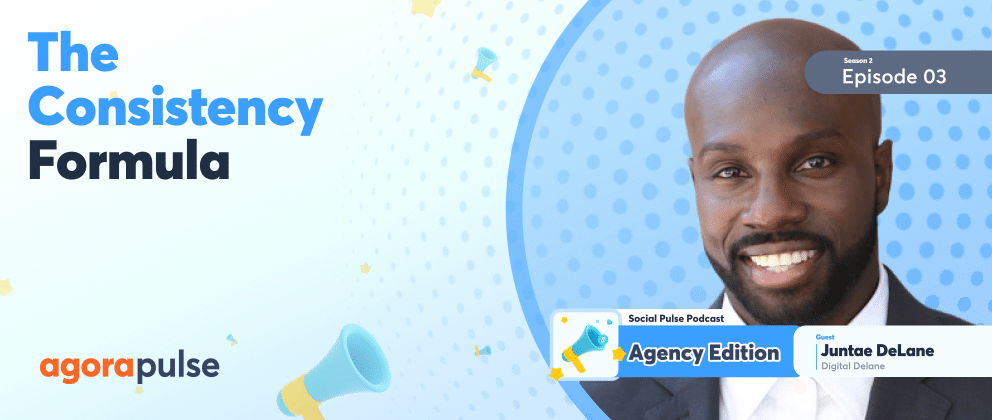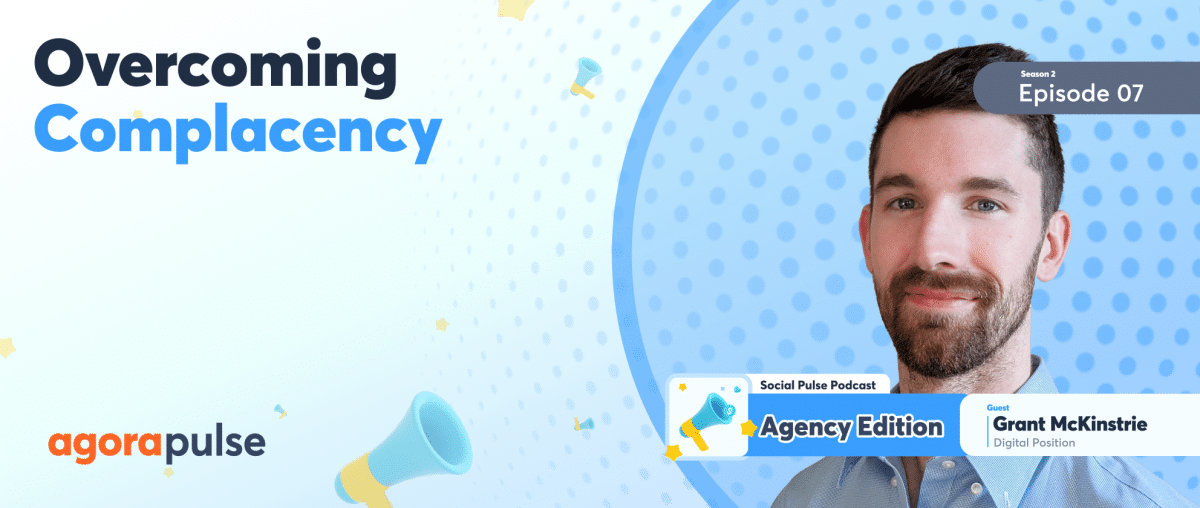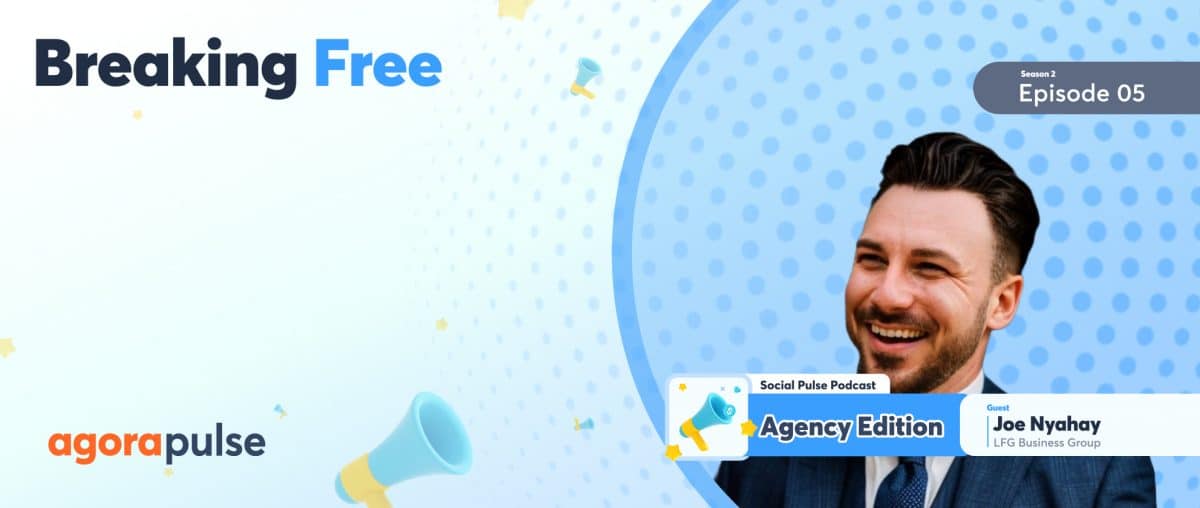Are you frustrated with the rollercoaster results of your digital marketing efforts? One month you’re soaring. The next you’re scrambling, explaining the downturn. Achieving consistent results can seem like an elusive goal, compounded by factors outside your control. But is there a science to sustaining steady success in digital marketing?
Today, we’re unpacking that very puzzle with Juntae DeLane, a digital marketing strategist and founder of Digital Delane. Juntae has engineered a formula for achieving consistent and reliable digital marketing outcomes, harnessing the power of data to maintain a steady trajectory. If you’re ready to move from inconsistent results to consistent success, Juntae is here to reveal the roadmap.
Listen to the full episode below or read on for the transcript.
Consistent Digital Marketing 101
Mike Allton: Let’s start with the basics.
How do you define consistency in the context of digital marketing?
Juntae DeLane: Wow. Well, that’s a great question. I think consistency really revolves around having a steady brand communication, a steady cadence of communication of all of your brand assets and communication, and so on. It also comes with building trust and relatability amongst your clientele (or whoever you’re targeting).
It also focuses on ensuring that every single transaction is the same, of the same quality, of the same impact, and so on. And so this is all the factors that revolve around having a consistent brand marketing campaign, for your client or any organizations that you may represent.
Mike Allton: I’m so glad you put it that way because sometimes when I ask people that, their answer is, “Well, we post Monday, Wednesday, Friday at 1 PM.” That’s their definition of consistency, which is not what we’re talking about here, right?
We’re not talking about necessarily posting the same time of day or the same day of the week.
That doesn’t have anything to do with being consistent as a brand. Yeah, that’s good to have a consistent schedule, maybe, but what’s so much more important is everything that you outlined there. So I thank you for sharing that.
What would you say inspired you to develop a formula or approach that focuses on achieving consistent results in digital marketing?
Juntae DeLane: I mean, Mike, when you look at all of the popular brands, and so let’s say, for example, a lot of fast food restaurants that deliver consistent results: You walk in the door. The customer service, the environment is all consistent, and what you would expect when you order your food and get your food. It looks like the pictures on the menu.
“Consistency across the board is ultimately going to help your brand. And when you think about the successful brands that are really doing well and really engaging and connecting with their target audience—they are consistent. Every single offering or deliverable that they have is meeting the expectations of their clientele. So when you think about building a brand and remaining consistent, creating SOPs and processes that can ensure every single experience that your clientele has is exactly the same every time.”
Some key points there to help establish a consistent delivery of your offering is something that we at Digital Delane really adopted when it comes to managing our clients.
And so one, we have an SOP, and that SOP is attached to a specific service offering that we have.
An example of that would be our social media marketing.
How can we create social media campaigns on behalf of our clients that are consistent?
[That] has the same level of quality content, that has the same level of engagements, whether it’s proactive engagements or reactive engagements. It has the same level, so we have a lot of creative assets that are of high quality across the board.
What we do is implement that SOP to make sure that we have checks and balances in place when it comes to identifying the persona and getting research on that persona.
When it comes to focusing on where we should engage, whether it’s on the timeline of our client or out in different online communities where our client’s target audience resides—there is a formula established, and we leverage that formula for every single client to remain consistent across the board.
Consistent Quality (Like a Good Burger Spot)
Mike Allton: I love that you started this with an analogy to fast food because I think there’s another element to that that’s true, which is that if you walk into a fast food restaurant, this happened to me relatively recently, and the food isn’t what you’re used to. If it’s inconsistent with your past experiences and expectations, you pick up on that instantly, you notice right away if the fries are cold or the burger is missing the cheese or whatever it is that you were expecting to receive.
And it’s something I think—and I want to know if you agree with me—you don’t think about that when the consistency is there. If you go in, you place your order, you get what you expected. You don’t think about it. You just go on to eat your food or do whatever it is that you were expecting to do.
It’s when it’s messed up that it’s suddenly really a stark difference in your past experiences.
And I feel like that’s the same thing with brands and their marketing. When they’re inconsistent, it’s noticeable. When it’s consistent, it’s only noticeable to people like you and I, who are paying attention to the market that the consumers probably don’t care. Would you agree with that?
Juntae DeLane: I would agree with it. I think when you are looking to focus on when your target audience believes that the service that they have is inconsistent, you want to establish that feedback loop.
Gathering audience insights is, of course, key in that process. So, as you continue to service a client—and you continue to look at how the audience is engaging with your offering or your services—creating that feedback loop with audience insight is certainly key because it’s going to allow you to update and optimize as you go along to make sure that it is consistent across the board.
Those are some key pieces of advice, information, and best practices that I would give any agency owner who is looking to remain consistent in the space.
Mike Allton: And that’s one of the challenges that consistency isn’t going to necessarily be noticed. Like we said, you’re not going to get a metric on it, but …
Can you share some of the points or metrics that you would focus on to ensure consistency in all of your campaigns?
Juntae DeLane: Yeah, I think [for] one, looking at the engagement rates, right? So when you see, for example, how people are engaging with your content, you can set a benchmark across the board for the type of content that really resonates with the target audience.
I think conversion rates are another thing. You may have content that gets a lot of views, but ultimately, at the end of the day, you’re looking to move the needle for your client, and conversion rates are really what keeps the job security there. And so, when you look at content and the engagement rates and conversion rates—those are some key metrics that I think would be helpful. You can also look at brand sentiment as well [as] analyzing the tone and sentiment of user feedback that again goes into that feedback loop that we talked about earlier as a KPI, that’d be great for any type of campaign.
Mike Allton: Agree with that. And one of the things I mentioned at the outset was that sometimes there are external factors that can impact the consistency that we’re able to deliver, whether it’s the campaigns themselves or the results of those campaigns.
How do you handle those kinds of variables and those kinds of external factors that may be outside of your control, but they’re still going to impact your results?
Juntae DeLane: I think we don’t know which direction, which trend is going to pop up. We can have an idea.
Based upon the research that we’ve done, and our experience in that specific vertical, ultimately we want to make sure that we keep our thumb on the pulse of what actually is going on with the target audience of your client.
- One way to do that is through real-time monitoring. You want to make sure that you focus on real-time monitoring to track the performance and trends [and] to be sure that you’re able to adjust for any updates or hiccups or any friction or external factors that could ultimately impact the campaign.
- Have a backup plan, some type of contingency plan to focus on. If the unexpected happens, what are we going to do? What are we going to do? And if we have forethought and be able to implement a protocol to leverage just in case things go awry, then that’ll push the bar closer to being something that’s more consistent, with when you’re looking at your metrics or your analytics.
- Look at the data, of course, to identify if there are any specific patterns that you’re noticing that could cause some potential disruptions, and then use that to move forward with any of your campaigns.
Mike Allton: That’s great advice. And you mentioned real-time tracking of what’s going on and talking about data.
So what are the kinds of technology or maybe even automation, we should have in place that would help us maintain consistency across all our digital marketing efforts?
Juntae DeLane: Obviously, having some scheduling tools is going to help you remain consistent to make sure that the content is published consistently across all of the different platforms. Making sure that you have analytic software involved so that you can look at the insights to adjust some of your planning in terms of the best time to send a specific piece of content or when would be a good day or holiday or event and so on.
I don’t think software would help in that process to truly define how you should schedule content. Also, you want to focus on having some type of customer relationship management system (obviously CRM), so that you can manage the interactions with your target audience consistently based on their behavior or based upon their life cycle. With consuming your offering or your client’s offering, you can create communications that would meet them where they are, meet them when they’re actually going to need that offering, and schedule it out beforehand to help remain consistent, remain top of mind, and so on.
Mike Allton: Great recommendations. Great suggestions.
Folks, we’re talking with Juntae DeLane about what it takes to build consistent marketing campaigns and results for your clients. One key to consistent success, of course, is having reports at your disposal that demonstrate that consistency—but you need a tool like Agorapulse.
Running Campaigns With Good Results
Could you walk us through a campaign where you have used some of these tactics that you’re talking about and seen steady and reliable results?
Juntae DeLane: One successful campaign that we implemented at Digital Delane for a client was in the e-commerce sector where we essentially implemented a consistent posting schedule to make sure that the brand stayed top of mind for their audience. And we continue to engage at a high frequency, whether it’s proactive engagements or reactive engagements, as well.
We had periods where we would check the analytics and revise any of the ongoing strategies and posting that may be taking place. And ultimately, with this structure, we were able to get an increase in engagement rates, steady rise in the followers and, of course, a notable boost in sales conversions as well.
Mike Allton: Love that. So when you’re talking to clients, some of them might be saying things like, “Hey, we want to go viral or other kinds of bizarre expectations.”
How do you set realistic expectations while you’re still aiming for consistent performance?
Juntae DeLane: It’s an interesting topic, and it’s something that I teach my team about often is making sure that we establish realistic expectations for all of our clients at Digital Delane. And I think it starts with me as the founder.
One of the things that we do earlier on is we make sure that we have a pretty robust onboarding and kickoff process. One of the things that we do about onboarding is make sure that, when we develop our proposals and their clear communication, they understand what’s in the proposal.
During the onboarding process, we have them fill out information about their brand so they can upload all the assets. We focus on giving them information to connect with various profiles, the Meta Business Suite as a partner, and all the other profiles. And then we focus on having them schedule a kickoff call with the agency. Before the kickoff call, they’ll receive a series of communications that walk them through exactly what they can expect during the kickoff call: what they’re responsible for, what they should bring and so on.
During the kickoff call, we focus on going over the overarching strategy of what we were planning on doing for them. We also answer any questions that they may have, or we look at their client brief that they completed during the onboarding session to see if there are any holes or any questions that we have or anything that we want to firm up a little bit. And also we make sure that, during this kickoff call, we have them identify what their goals are. And we identify specific KPIs, whether it’s getting more leads, getting more conversions, impressions of brand awareness, and so on. And then we also look at our scope.
When we do these two things together, we identify if there’s any gaps with regard to what they are expecting.
So if they’re expecting to get a million customers in a month, but they’re on a starter package. Well, there’s a gap there, right? What we would like to do is use that opportunity to either upsell or cross-sell—but also leave them with the impression of, “This is where we are, this is where we’re going to start. And we can eventually grow to that point.”
“We want to make sure we set realistic expectations by having them identify their goals and checking that against the scope that we’re actually contracted for and then move forward from there.”
So those are a couple of ways that we really focus on helping the client have realistic expectations about the deliverables that we have.
Mike Allton: Now almost every agency owner I talked to is a little bit different. So I’m wondering, are you primarily sales-focused personally? Are you like the face of the company from that perspective or what is your role?
Juntae DeLane: Yes. So now, I’m at about 85 percent autonomy with the agency. So, I’m taking a step away from the sales—even though I do hop in on sales calls for clients that may know my name or may have engaged with me outside of the agency—but ultimately we have all the key players in place, as of now. I come in and, just in case there’s a larger client, I can help seal the deal.
Mike Allton: Awesome. And then they just had that great onboarding process to pass them on to the rest of your team. That’s terrific.
Common Mistakes Made
What about some common pitfalls or mistakes that agencies or clients should look out for when they’re trying to be consistent with digital marketing efforts? These kinds of things are relatively common roadblocks or stumbling blocks that they might run into. Do any of those come to mind?
Juntae DeLane: The common mistake that many marketers face when executing campaigns is neglecting the audience insights and primarily as marketers.
The first thing that we may think about is, “Let’s create content. And let’s showcase all the wonderful things that our client offering has.” But oftentimes they don’t pay attention to what the audience wants in particular for social media.
What we like to do is we like to focus on identifying the key offering for our clients and also what resonates with the target audience and try to infuse that offering into actually what resonates with the target audience. We start off with what the audience likes first and then try to infuse the client’s offering into that instead of doing it the other way around.
That’s one thing I think is highly neglected for many marketers across the board.
Mike Allton: I couldn’t agree more. In a previous life, I was a website designer, and one of my clients was a cat breeder, and she wanted bouncing gifs of kittens scrolling across her page. I had to fight with her because I’m like, “This is not necessarily what your target audience is looking for. This isn’t going to help them make a decision about purchasing a cat. It’s just adding noise to your website and that’s not going to help anyone at all!”
Now, I’ve got just two more questions for you. And this is the one that I love asking every agency owner because the answers are a little bit different and nuanced, and it’s really interesting. So I’m wondering:
How do you currently measure the business impact of social media in the context of maintaining consistent outcomes?
Juntae DeLane: Well, I think that is the question that provides a great deal of clients for us because we do have a formula and have figured that out.
And we actually use Agorapulse to help with that. The Agorapulse social ROI feature is wonderful, and it’s working really well for us.
Essentially what we do is we make sure that we try to link all social media activities to any type of sales and lead generation. So we make sure that we have all of the Google analytics data piped into Agorapulse so that we can see exactly how much traffic is being drawn from our social media activities, obviously leveraging UTM parameters through unique tracking links, and things like that. We actually can showcase the work that we’re doing and how it’s contributing to the client’s bottom line is something that is helpful when maintaining consistent outcomes and moving the needle for our clients.
What are some of the actionable steps that our listeners can take to start achieving steadier results? In their digital marketing campaigns?
Juntae DeLane: The actions that people can take when providing steady results for clients would be:
- Define clear goals, what is the goal of the campaign, and make sure it’s specific and measurable.
- Creating a content calendar, of course, is key, making sure that you have all the content planned out and that you have all of your resources and efforts created beforehand to create that content and then publish it.
- And also have consistent branding as well, making sure that there’s consistency across the board, for all the content, whether it’s the look, the feel, the filters, the types of images, so on and so forth remain consistent.
- And then having a cadence of client engagement is also very important, making sure that you’re checking in and specific and periodic times for sync meetings with clients is certainly going to be helpful.
- And then make sure that you also are analyzing the data beforehand so that you’re able to adjust your campaign down the line.
Those are some key things that I think would help any marketer to achieve consistent marketing campaigns for the client or any organization that they represent.
Mike Allton: Love that. Terrific advice. Juntae, this has been fantastic. Thank you so much.
Thanks to all of you for listening [and reading!]. Don’t forget to find the Social Pulse Podcast: Agency Edition on Apple, and leave us a review. We’d love to know what you think. Until next time.





